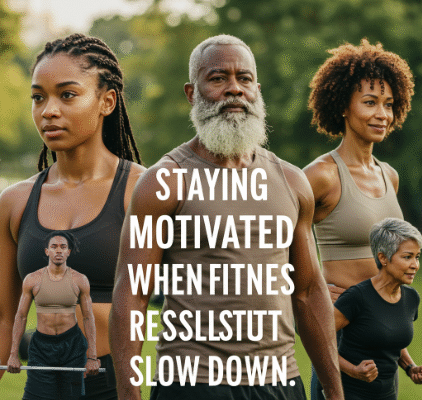Content
Understanding Why Results Slow Down
Several factors contribute to the slowdown of fitness results. Firstly, your body adapts. When you first start working out, your body is relatively untrained and responds quickly to new stimuli. However, as you become fitter, your body becomes more efficient at performing the exercises, requiring less energy and effort. This means that the same workout that initially produced significant results will eventually become less effective. Secondly, consistency is key. When starting out, enthusiasm often drives you to adhere strictly to your workout and diet plan. However, as time goes on, life gets in the way, and it’s easy to skip workouts or indulge in unhealthy foods more frequently. Even small deviations from your plan can significantly impact your progress. Thirdly, inadequate nutrition plays a significant role. You might be working out consistently, but if you’re not fueling your body properly, you won’t see the desired results. This includes not consuming enough protein to support muscle growth, not eating enough calories to fuel your workouts, or not getting enough essential nutrients. Finally, stress and lack of sleep can hinder progress. Stress hormones like cortisol can interfere with muscle growth and fat loss. Similarly, lack of sleep can disrupt hormone balance, leading to increased cravings and decreased energy levels, making it harder to stick to your fitness plan.Strategies to Reignite Your Motivation and Break Through Plateaus
Don’t despair! Hitting a plateau doesn’t mean your fitness journey is over. It simply means you need to adjust your approach. Here are some strategies to reignite your motivation and break through those stubborn plateaus:1. Re-evaluate Your Goals
Take a moment to reflect on your initial fitness goals. Are they still relevant and motivating? Perhaps you initially wanted to lose weight, but now you’re more interested in building muscle or improving your endurance. Adjusting your goals can provide a renewed sense of purpose and direction.2. Change Your Workout Routine
Variety is the spice of life, and it’s also essential for fitness. Your body adapts to repetitive movements, so switching up your routine can challenge your muscles in new ways and stimulate further growth. Consider incorporating different exercises, increasing the weight or resistance, changing the sets and reps, or trying a new form of exercise altogether.Trying new exercises or workout styles can stimulate muscle growth and prevent plateaus. It keeps things interesting and engages different muscle groups. This could include trying a new class, using free weights instead of machines, or adding plyometric exercises.
3. Optimize Your Nutrition
Nutrition is a critical component of any fitness plan. Ensure you’re consuming enough protein to support muscle growth and repair, especially after workouts. Focus on whole, unprocessed foods like fruits, vegetables, lean protein, and whole grains. Track your calorie intake to ensure you’re eating the right amount to support your goals. Consider consulting with a registered dietitian for personalized guidance.4. Prioritize Rest and Recovery
Rest and recovery are just as important as exercise and nutrition. Your muscles need time to repair and rebuild after workouts. Aim for at least 7-8 hours of quality sleep each night. Incorporate rest days into your workout schedule to allow your body to recover. Consider incorporating active recovery activities like stretching, yoga, or light cardio to improve circulation and reduce muscle soreness.5. Track Your Progress and Celebrate Milestones
Tracking your progress can help you stay motivated and see how far you’ve come. Keep a record of your workouts, weight, measurements, and other relevant metrics. Celebrate your accomplishments, no matter how small. Rewarding yourself for reaching milestones can help you stay motivated and on track. This could be anything from buying yourself a new workout outfit to treating yourself to a healthy meal.Don’t solely rely on the scale for progress tracking. Measurements, progress photos, and how your clothes fit can be better indicators. Focus on overall health and well-being, not just a number.









